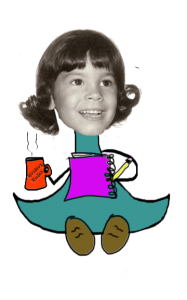Most writers (myself included) hate the word “outline” (though I do know some who embrace it. They are often the ones who write faster and more efficiently than me). The word conjures up thoughts of five-paragraph essays and other dreaded writing assignments in school.
So we may use euphemisms like I do in the title–mapping, planning, plotting, organizing. Each word brings to mind different methodologies, but each one should help provide some kind of path to working our way through our book.
Back in my January 1 post on setting realistic writing goals, I mentioned that I was using Blake Snyder’s 15 beats from his book Save the Cat. This has become my “outline” for my work-in-progress and is keeping me on track.
The thing I feared about using any kind of outline or plotting tool–that it would take away the fun of discovery–has not materialized. Just last week I wrote a scene in my work-in-progress where my goal was to show the relationship Sheridan used to have with her father. And it does that. But suddenly there was a stack of mail on his desk addressed to Sheridan’s mother and the scene fleshed out with what was going on with the mom and ended up being quite powerful.
Knowing on one level what I want a scene to be about doesn’t mean the scene is already written. When I write it, new circumstances or character clues unfold–the magic remains.
 If you, like me, are generally a non-outliner, that’s fine. But I’m now convinced that if I want to have any hope of writing a book a year (as opposed to it taking me 2-3), I need to have some structure and organization.
If you, like me, are generally a non-outliner, that’s fine. But I’m now convinced that if I want to have any hope of writing a book a year (as opposed to it taking me 2-3), I need to have some structure and organization.
At the very least, I try to identify three main points along the way before I begin writing. (These apply to novels and to narrative picture books)
- The catalyst/first turning point. This is the event that occurs early in the story that spins it in a new direction – jolts the main character out of his/her “ordinary” life.
- Climax. This is where the character faces the main problem (his own or manifested in an actual villain) and hopefully ties into the main character’s growth arc.
- Resolution/ending. How does the story come to an end in terms of whether the main character does or doesn’t get his/her goal and how does it leave the reader satisfied (and in the case of a picture book, wanting to hear the story again).
If I at least have a general idea of these three, I feel like I can begin moving forward. As I mentioned earlier, with my work-in-progress, I’ve used all 15 of Blaket Snyder’s beat sheets, so my novel “outline” is much more detailed.
If you outline or map your books before writing, share your strategies!




